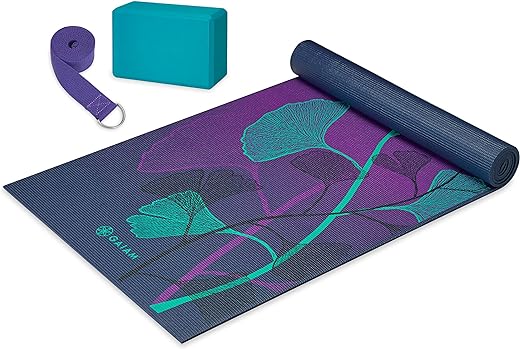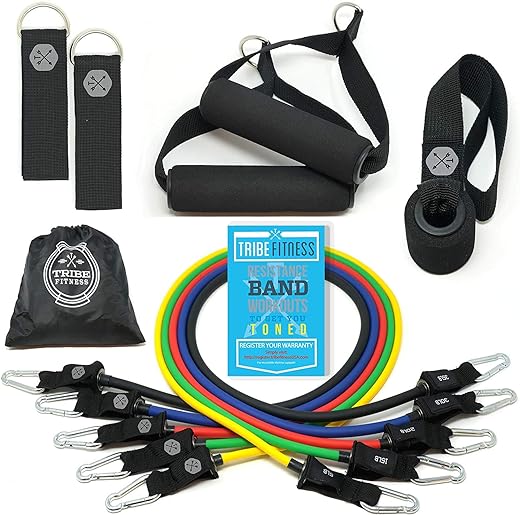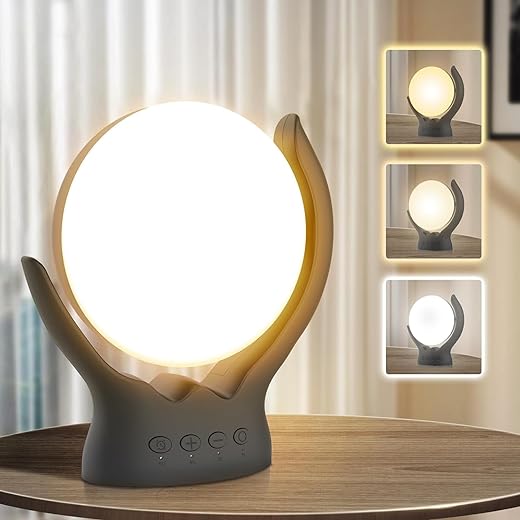Choosing the right thickness for your yoga mat is crucial for optimal comfort and support during your practice. The ideal thickness will provide cushioning for your joints while ensuring stability for all poses. Learn how to determine the perfect thickness in our step-by-step guide.
Top Picks in Yoga Essentials
Understand your preferences and needs
Evaluate your body type, practice type, and any health issues before selecting a yoga mat thickness. For instance, if you have a larger body frame or discomfort in joints, a thicker mat may be needed for cushioning and support during poses. If you primarily practice restorative or gentle yoga, a thicker mat provides more comfort for longer periods of relaxation. In contrast, thinner mats are suitable if you’re into dynamic practices like Ashtanga or hot yoga where stability and better grip are crucial for challenging poses.
Assess Your Sensitivities and Alignment for Optimal Thickness Choice
Reflect on specific joint issues or sensitivities to pinpoint your ideal yoga mat thickness. Those with knee problems may benefit from thicker mats to relieve pressure on joints during postures that require kneeling. On the other hand, if you’re prone to ankle twisting or balance issues, a thinner mat offers better stability and connection with the ground for standing poses like Tree or Warrior III. Always seek a balance that accounts for both comfort and stability based on your body’s unique needs to enhance your yoga practice.
Research different thickness options
Exploring Yoga Mat Thickness Options
To begin, examine the range of yoga mat thicknesses available on the market. Thickness options typically range from 1/16 inch to 1/4 inch. Identify how your intended use aligns with each thickness level to comprehend how it may affect your comfort and stability while practicing yoga. For example:
- Choose a thinner mat (1/16 inch) for activities like hot yoga or Pilates, where a firm grip and surface connection are vital. This thickness provides a solid base for balance poses and allows for a better sense of connection with the floor.
- Opt for a thicker mat (1/4 inch) when prioritizing comfort during restorative or yin yoga practices. The extra cushioning supports joints and provides a soft surface for stretching and longer holds, enhancing your overall relaxation experience.
Subsequently, test out different thickness options to determine the one that best suits your individual preferences and needs. Lay down various mats with different thickness levels side by side, then try out each mat for different yoga poses and movements. Compare how your body feels on each mat, taking note of how your comfort and stability are affected, depending on the thickness. Upon finding the ideal thickness for your practice, confidently select the yoga mat that meets your requirements, enabling you to enhance your yoga sessions with the optimal level of comfort and support.
Test different thickness levels
Experimenting with different thickness levels of yoga mats will help you determine the best option for your practice. Follow these steps:
- Visit a local store or borrow mats from friends.
- Lay out mats with varying thickness levels.
- Feel: Stand, kneel, and lie down on each mat to assess comfort level.
- Stability: Perform balancing poses to test stability on each mat thickness.
- Balance: Practice shifting weight and movements to see how balance is impacted.
By physically trying out different mats, effectively evaluate how comfort, stability, and balance are impacted. Experimentation allows you to find the ideal mat thickness for your yoga needs.
Consider your practice environment
Consider Your Practice Environment
When assessing your practice space, start by evaluating the type of surface you will be using for yoga. The surface you practice on can have a significant impact on your comfort and safety during your routines.
- Hard Floor: If you practice yoga on a hard floor like wood or tile, opt for a thicker yoga mat to provide ample cushioning for your joints. Look for mats that are at least 1/4 inch to 1/2 inch thick to protect your knees, elbows, and spine during poses like Plank or Camel.
- Carpet: Practicing on carpet offers a softer surface than hardwood or tile floors. However, thicker mats or double-layered mats may still be necessary for enough cushioning, especially during poses that require kneeling or lying down like Pigeon or Savasana.
- Grass: If you enjoy practicing yoga outdoors on grass, a medium-thick mat around 1/8 inch to 1/4 inch should provide sufficient support while still allowing you to feel connected to the ground. In this environment, ensure your mat has a good grip to prevent slipping during poses like Warrior II or Tree.
By understanding how different surfaces can impact your practice, you can choose the right thickness of yoga mat to enhance your comfort and stability during each session.
Make an informed decision
Decide on the ideal yoga mat thickness that aligns with your needs and personal preferences by evaluating factors such as stability and comfort. Conduct thorough research on varying mat thicknesses and their effects on grip and cushioning during practice. This might involve visiting reliable yoga equipment websites or exploring expert articles to gain valuable insights. Based on your body structure, consider the impact of a thick cushion on balance and joint support. Once you’ve gathered intel, enhance your decision-making process by testing out yoga mats of different thickness levels before making a commitment.
Evaluate your practice environment when finalizing your choice of yoga mat thickness to elevate your yoga sessions. Take into account the surface on which you usually perform yoga; a more robustly padded mat could be advantageous for hardwood floors compared to carpeted surfaces. Assess transportability needs, as thicker mats might be more cumbersome to carry around for frequent classes. With a focus on aligning your mats’ thickness with your immediate practice area and routine, you’ll be better equipped to immerse yourself fully in your yoga journey with improved support and stability.
Choosing the Right Mat for You
In conclusion, finding the ideal thickness of a yoga mat is essential for a comfortable and supported practice. With personal preferences and individual needs varying, it is crucial to assess what works best for you. Experiment with different thicknesses to strike the right balance of comfort and support to enhance your yoga experience.
Essential Equipment Needed
Selecting the Right Mat
Elevate Your Practice: A Step-by-Step Guide to Using Yoga Mats and Blocks
- Start by rolling out your yoga mat on a flat surface to provide a comfortable and non-slippery foundation for your practice
- Use yoga blocks to support you in poses that may be challenging at first, such as modified versions of forward folds or lunges
- Incorporate the yoga blocks to help you maintain proper alignment in poses like downward-facing dog or supported bridge
- Remember to clean your yoga mat regularly to keep it fresh and prevent bacteria buildup
- After your practice, roll up your yoga mat neatly and store it in a clean, dry place until your next session
Choosing the Right Gear
Would you prefer yoga blocks made with sustainable materials?
Certainly, using yoga blocks made with sustainable materials carries a host of benefits. Sustainable materials are better for the environment, they can be gentle on our skin, and they often have a longer lifespan. Additionally, they contribute to supporting eco-friendly practices and reducing the impact on the planet. By opting for yoga blocks made with sustainable materials, you not only prioritize your well-being but also promote a more environmentally conscious choice.
Are you looking for yoga blocks with rounded edges for added comfort during poses?
Yes, definitely! Rounded edges on yoga blocks can provide added comfort and stability during poses. They can help reduce pressure on your joints and provide a more comfortable surface for your body to rest on. So, looking for yoga blocks with rounded edges is a great choice to enhance your yoga practice.
How important is easy maintenance and cleaning for your yoga mat?
Easy maintenance and cleaning are essential for maintaining the quality and hygiene of your yoga mat. Regular cleaning helps extend the life of your mat and removes germs, sweat, and dirt that can accumulate during workouts. By caring for your yoga mat properly, you can ensure a more pleasant and beneficial yoga practice for many years to come.
Do you trust brands that specialize in yoga gear for better performance?
Yes, many people trust brands that specialize in yoga gear for better performance. These brands often have a deep understanding of the specific needs and preferences of yogis, resulting in products that are thoughtfully designed for improved performance and comfort during yoga practice. By focusing solely on yoga gear, these brands can devote resources to developing high-quality, specialized products that cater to the unique requirements of yogis. This specialization can lead to innovative designs, sustainable materials, and products that enhance the overall yoga experience.
Are you open to exploring new accessories like yoga towels to enhance your practice?
When it comes to elevating your yoga practice, incorporating accessories like yoga towels can truly enhance your experience. These towels are designed to provide additional grip, absorb sweat, and maintain hygiene during your practice. They can offer better stability in challenging poses and help you stay focused and comfortable throughout your sessions.
By using a yoga towel, you can better concentrate on your practice without slipping or distractions. The absorbent material of the towel can wick away moisture, keeping you dry and improving your grip on the mat. This can be particularly beneficial in heated or intense yoga classes where sweat may be a factor.
Adding a yoga towel to your practice can also help extend the lifespan of your yoga mat by providing a protective layer between you and the mat. This extra barrier can prevent oils, sweat, and dirt from seeping into your mat, keeping it clean and fresh for longer.
So, if you are looking to explore new accessories to enhance your yoga practice, incorporating a yoga towel could be a great choice. It not only adds functionality and comfort but also contributes to a more satisfying and focused yoga experience.
How important is the durability of your yoga mat or blocks to you?
The durability of your yoga mat or blocks is incredibly important. Investing in a high-quality, long-lasting yoga mat or blocks ensures that they can withstand frequent use, maintain their grip and support, and prevent wear and tear over time. By choosing durable yoga equipment, you are making a wise investment in your practice and overall experience. Quality and durability go hand in hand to support your health and well-being during every yoga session.











![[0]Gaiam Yoga Mat Bag – Full Zip Cargo Yoga Mat Carrier Bag – Adjustable Strap, Front & Back Pockets (25”L x 6” Diameter)](https://adventistmarket.com/wp-content/uploads/2024/02/0gaiamyogamatbagfullzipcargoyogamatcarrierbagadjustable.jpg)







Could you explain more about the impact of different thickness levels on joints and overall comfort during a yoga session? Understanding the health benefits associated with choosing the right thickness would be very insightful.
I found this guide very informative and helpful in selecting the right thickness of a yoga mat. I would love to see a future article covering eco-friendly yoga mat options and how to choose the best one without compromising on quality.
I never thought about the impact of the practice environment on the ideal thickness of a yoga mat until reading this guide. It would be great to see tips on how to care for different thickness mats to ensure they last longer.
I’m glad you found that section useful! Caring for yoga mats is crucial for their longevity. I’ll consider including tips on maintenance in future articles. Thank you for the suggestion!
I would love to see a section in the guide where you discuss how body weight and pressure distribution on the mat can influence the choice of thickness. Understanding these dynamics could help readers make a more informed decision.
Thank you for your suggestion! Exploring the relationship between body weight, pressure distribution, and mat thickness is a great idea. I’ll aim to cover that aspect in more detail in future articles. Your input is much appreciated!
I prefer using yoga blocks during my practice for added support. It would be beneficial to have a guide on how to choose the right yoga block to complement the thickness of the mat. Looking forward to more insightful content!
Great point about incorporating yoga blocks! I’ll definitely consider creating a guide on selecting the right yoga block to enhance the practice experience. Thank you for sharing your input!
Thank you for your feedback! I appreciate your suggestion for a future article on eco-friendly yoga mats. I’ll definitely consider covering that topic in an upcoming piece.
The information provided in this guide helped me select a suitable yoga mat thickness for my outdoor practice sessions. It would be interesting to see a follow-up article on how to adapt mat thickness based on different terrains for outdoor yoga enthusiasts.
I’m thrilled to hear that the guide was useful for your outdoor practice! Your suggestion for an article on adapting mat thickness to different terrains is fantastic. I’ll work on incorporating that topic in a future piece. Thank you for the suggestion!
What are some popular yoga mat brands that offer a variety of thickness options to cater to different preferences and needs? It would be interesting to explore different brand recommendations in relation to thickness selection.
I’ve experimented with different thickness levels on my yoga mat and noticed variations in balance and stability during poses. Sharing personal experiences like this could help readers understand the importance of choosing the right thickness. Looking forward to more practical tips!
Your experience with different thickness levels is valuable insight! I’ll aim to include more personal anecdotes and tips in future articles to provide a well-rounded perspective. Thank you for sharing your experience!